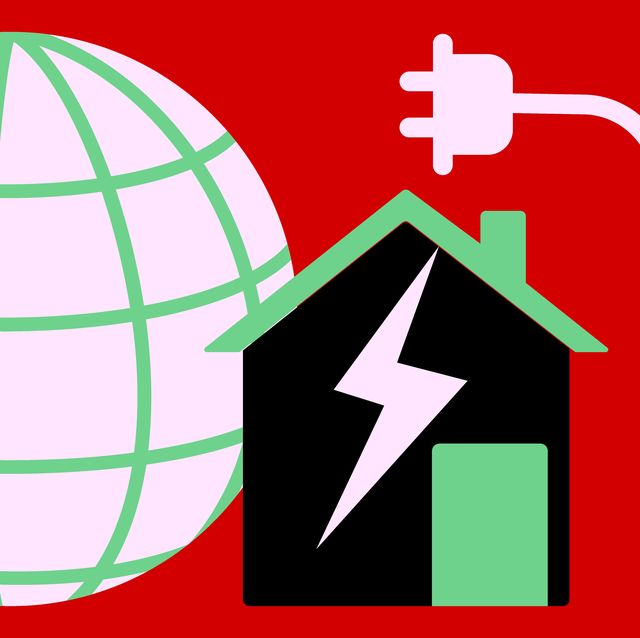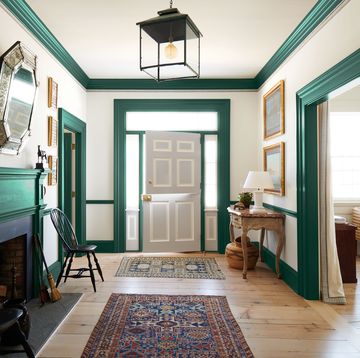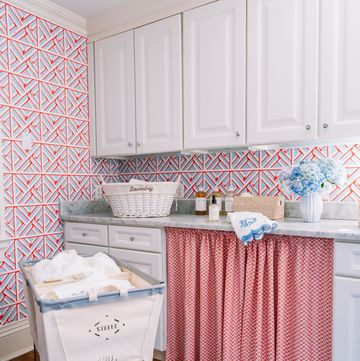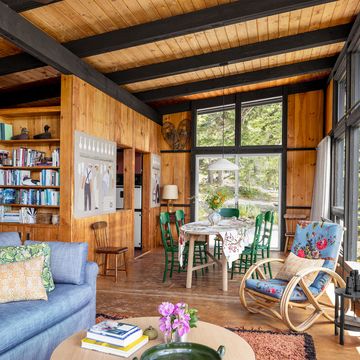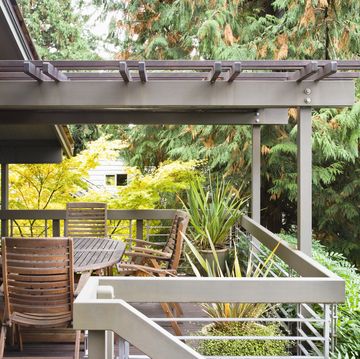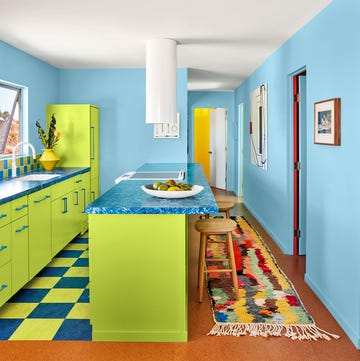When you live in an apartment, it may seem as if you have little control over your environmental impact. After all, you can’t ensure that your building is LEED-certified or uses energy-efficient appliances. But about 36 percent of the nation’s households are renters, which means renters have a lot more power than you’d think.
“There are many things you can do, both before you move in and after you’re a tenant, to reduce your impact,” insists Lara Fowler, director and chief sustainability officer of the Penn State Sustainability Institute. “There’s a lot in your power, especially when you work with friends and neighbors. Sometimes bottom-up action can help push changes.”
Remember that sustainability isn’t just about energy use. There are plenty of other actionable steps—both big and small—that can make a difference, Fowler says. When you take a holistic approach and look at all the little things you can do to live sustainably, baby steps do add up.
Here’s what you can do as a renter to reduce your environmental imprint.
Consider Where You Live
If you’re looking for a place or will be moving soon, investigate its proximity to the resources you need. For example, a shorter commute to work, school, and grocery stores reduces your overall impact, Fowler says. Also, check on nearby public transit options, sidewalks, or bike lanes in the vicinity, which you’d be able to use instead of driving everywhere.
Research Your Rental’s Energy Costs
Potential renters can ask about the building’s energy efficiency, which may be posted on doors in some urban areas. For older buildings, ask to see past utility bills for the most extreme weather months. Sure, that charming Victorian is delightful, but how will you feel about its drafty windows and exorbitant utility bills in the middle of winter? Knowing these costs up front can help you make a more objective decision when comparing rental options, Fowler says.
Unplug Your Stuff
Standby or “always on” electricity refers to appliances that use power when not in active use, even when in sleep or standby modes. In fact, one study showed that nearly 23 percent of household electricity consumption was by “always on” devices.
It all adds up. “All those things plugged in, from your cell phone to your laptop, pull power,” says Lisa Feretto, senior director of climate action and design excellence with the American Institute of Architects. “Use a power strip that allows you to plug everything into one place, and then you can switch everything off at once.”
Think Beyond Light Bulbs
Of course, you can replace old incandescent bulbs with energy-efficient LED bulbs, and shut off lights in a room when not in use. But you also can utilize passive strategies: In winter, open window coverings to let sunlight in, and close them during the blazing hot days of summer, Feretto says.
When using your dishwasher, forgo the heated drying cycle and just open the dishwasher door to let dishes dry, Feretto says. If your HVAC system is accessible to you, you should change its air filters regularly for better air quality and efficiency.
If you have access to your water heater, set it to 120 degrees Fahrenheit. Also, use cold water whenever possible for washing clothes. In addition, “use a clothes rack to dry clothes so you won’t need the dryer, which also has less impact on clothes so they last longer,” Fowler says.
Install Some Weather Stripping
There are easy things you can do to make your apartment more comfortable. “Buy weather stripping tape,” says Khoi Vo, chief executive officer of the American Society of Interior Designers. “It’s inexpensive and easily applied to windows and doors, and it really makes a difference in controlling heat gains and losses.”
UV reflective film and window treatments can also help with thermal control and reduce overuse of HVAC systems, Vo says.
Heat Yourself, Not the Whole Apartment
On chilly days, throw on an extra sweater, or use an electric heating blanket to stay warm, Fowler suggests. Are your feet freezing cold in your WFH office? Use a space heater to warm the area, if your apartment allows one (check your leasing agreement), instead of turning up the heat in the whole place.
Be Smart About Water Use
You already know not to let the water run when you’re brushing your teeth. But to save even more water, you can install a low-flow showerhead, which is a simple DIY job for most people, Fowler says. Using a water filter that connects to your faucet, instead of buying single-use water bottles, is an easy fix, too.
Talk to Your Landlord
When windows or major appliances need to be replaced, ask your landlord about choosing energy-efficient options. “There are many resources for energy-efficient upgrades available these days through the Inflation Reduction Act,” Fowler says. It may be worth mentioning in case your landlord isn’t aware of the programs. If you face resistance, talk to your neighbors—if everyone in your building speaks up about an issue, such as a lack of recycling options, there’s also a better chance that things will change. “You may think you’re only one voice, but there’s power in collective voices,” Fowler says. Of course, approaching the issue positively—such as saying you want to minimize the amount of waste you produce as a building—is more likely to yield good results.
Choose Renewable Power Options
It may not be an option everywhere, but you can reach out to your energy provider to see if they have renewable energy options to offset your use, Feretto says. For example, would you be willing to pay a few cents more per kilowatt-hour for renewable energy?
Compost, If You Can
If you’re renting a house, set up a composter in the garden to reduce the food scraps that end up in landfills. For apartment dwellers in large urban areas, there often are community drop-off sites, such as the NYC Compost Project, where you can take your food scraps for processing. Ditto for recycling, if your building doesn’t have a system in place.
Get Outside
A community garden is a great way to connect with others and with nature, as well as to grow food you and your neighbors can use. “Having a personal outdoor space is good for our mental health, too,” Feretto says. Even if you’re just planting a few containers of herbs on a deck or balcony, access to nature offers many health benefits.
Swap with Your Neighbors
Why not get everyone to recycle their unused items? Maybe you can set up a swap in the community room of your building for things you don’t need, Fowler says. Everything from a bike repair kit to countertop appliances you hardly ever use are fair game.
Buy Quality Furniture
“Choose quality—if people purchased furnishings that were the best their budgets could afford, items would last much longer and be more sturdy through multiple moves,” says Paula Daher, principal with Daher Interior Design. “Avoid the throwaway mentality, because these inexpensive items all end up quickly in the landfill.”
Or, Buy Vintage
You don’t always have to buy new, of course. When it comes to furniture and other decor items, consider vintage pieces and companies that go the extra mile to salvage and upcycle materials. “We attempt to use upcycled pieces, meaning refashioned furniture made from old or discarded materials, thus saving excess from landfills and requiring fewer resources,” says Jess Onorato, director of product design at Habitat Home & Garden.
Shop Smart
When shopping, look for products that support your beliefs. “Since most of us are not environmental scientists, as consumers, we need to rely on independent certifications to ensure that certain sustainability criteria are met in the sourcing, manufacturing, and distribution processes,” Vo says.
A few certifications to look for include: B Corporation Certified, FSC Certified, Cradle to Cradle Certified, Global Organic Textile Standard-Certified.
Vote
Always vote, and consider running for local office, such as the zoning board. “A lot of sustainability decisions are made at the local level,” Fowler says. “And as a renter, you have a unique voice.”
Pick Your Passion
It’s important to remember that sustainable living encompasses all aspects of living, not just how much energy you use or whether you buy from a B-certified corporation. “Take your environmental anxiety into action, and do something out of love,” Fowler says. “This is how each of us can make a difference.”
Whether that means volunteering at a food bank, planting a tree, or going to pick up trash, the choice is yours. What’s important is getting involved, feeling a sense of belonging to your community, and contributing in a positive way to your little part of the world. Nothing has more impact than that.
Arricca Elin SanSone has written about health and lifestyle topics for Prevention, Country Living, Woman's Day, and more. She’s passionate about gardening, baking, reading, and spending time with the people and dogs she loves.
